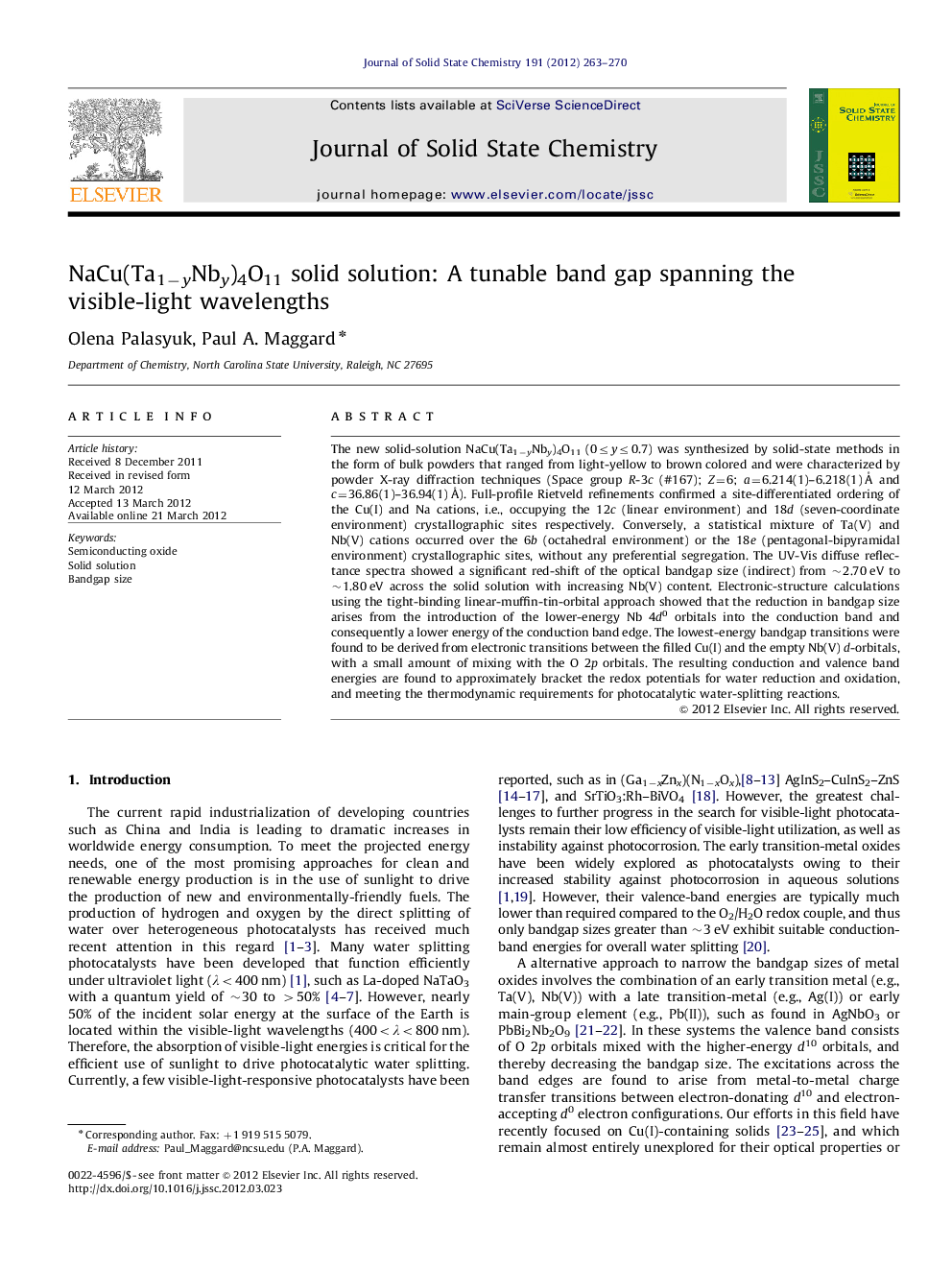| کد مقاله | کد نشریه | سال انتشار | مقاله انگلیسی | نسخه تمام متن |
|---|---|---|---|---|
| 1330667 | 1500125 | 2012 | 8 صفحه PDF | دانلود رایگان |

The new solid-solution NaCu(Ta1−yNby)4O11 (0≤y≤0.7) was synthesized by solid-state methods in the form of bulk powders that ranged from light-yellow to brown colored and were characterized by powder X-ray diffraction techniques (Space group R-3c (#167); Z=6; a=6.214(1)–6.218(1) Å and c=36.86(1)–36.94(1) Å). Full-profile Rietveld refinements confirmed a site-differentiated ordering of the Cu(I) and Na cations, i.e., occupying the 12c (linear environment) and 18d (seven-coordinate environment) crystallographic sites respectively. Conversely, a statistical mixture of Ta(V) and Nb(V) cations occurred over the 6b (octahedral environment) or the 18e (pentagonal-bipyramidal environment) crystallographic sites, without any preferential segregation. The UV-Vis diffuse reflectance spectra showed a significant red-shift of the optical bandgap size (indirect) from ∼2.70 eV to ∼1.80 eV across the solid solution with increasing Nb(V) content. Electronic-structure calculations using the tight-binding linear-muffin-tin-orbital approach showed that the reduction in bandgap size arises from the introduction of the lower-energy Nb 4d0 orbitals into the conduction band and consequently a lower energy of the conduction band edge. The lowest-energy bandgap transitions were found to be derived from electronic transitions between the filled Cu(I) and the empty Nb(V) d-orbitals, with a small amount of mixing with the O 2p orbitals. The resulting conduction and valence band energies are found to approximately bracket the redox potentials for water reduction and oxidation, and meeting the thermodynamic requirements for photocatalytic water-splitting reactions.
Graphical AbstractThe NaCu(Ta1−yNby)4O11 (0≤y≤0.7) solid solution shows a statistical occupancy of the Ta(V) and Nb(V) cations in both octahedral and pentagonal bipyramidal environments. An increasing Nb(V) content also causes a significant red-shift of the bandgap size from ∼2.70 eV to ∼1.80 eV.Figure optionsDownload as PowerPoint slideHighlights
► Double solid-solution of M(I) (=Cu, Na) and M(V) (=Nb, Ta) crystallographic sites.
► Increasing Nb content leads to tunable bandgap size from ∼2.70 eV to ∼1.80 eV across the solid solution.
► Layers of MO7 (M=Ta, Nb) pentagonal bipyramids and isolated MO6 octahedra.
Journal: Journal of Solid State Chemistry - Volume 191, July 2012, Pages 263–270